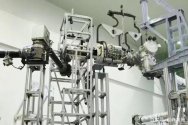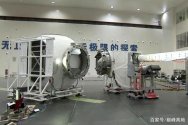I wonder how the Chinese engineers validate the design and testing of the robotic arm. Nothing tangible evidence has come up so far to indicate it is working. A 10 meter robotic arm here on earth has a significant weight, let alone can carry 20 tonnes load. With a detachable base with less than 0.5 sq meter of base area, thats difficult to put up without a static support elements.
Let us see if this is really working. If this really works, this would be probably the template for space robotic arms in the future.
The design is obviously well tested and validated if they've decided to use it and presumably have the actual thing already built with plenty of prototypes built and tested in the past well before the space station arm is sent up (no doubt the actual arm to be used is completed already).
How do they validate the design and engineering? Many processes too difficult and complex to simply guess at but they exist. How do they build those underwater tunnels that deal with seismic activity between Macau and HK/ mainland? I don't know but the methods and testing exists and the experts do know. Same with this. They don't need to broadcast the details on how it's tested. No one does that and when they do, it's usually for entertainment or education. The vast majority of humans can barely do simple maths, they won't understand the beginning of the technical aspects behind testing a space arm.
The tangible evidence to show that it's working isn't just in the prototypes shown but the fact they've openly stated this is the case. CPC don't openly state anything they know isn't true and can't be backed up if challenged... not that something like this would be challenged or worth challenging as opposed to political nonsense being thrown around all the time across the world.
They showed the animations and reported officially this is the planned arm and how it is planned to function. This is confirmation everything to do with design and testing has been done years ago and the actual unit itself is probably also completed and basically the station is being constructed with the second module just sent up and docked. The arm itself will be transported in some future launch.
The differences between testing environment here on earth and in space is
no doubt accounted for. This would be apparent to a high school kid failing physics, not a question or doubt to give the engineers at CNSA and contractors. You also should realise that earth conditions are much more "difficult" in terms of load. For one thing the arm being tested on earth has to deal with self weight which I would imagine is substantial. I could "propel" a 100KT object in space but it would be impossible to do that on earth. Every question pertaining to loading is FAR easier in space. The arm could be designed to work with the weight of a 10kg object here on the surface but could manipulate a 10T object in space. I think you have it the other way around.




